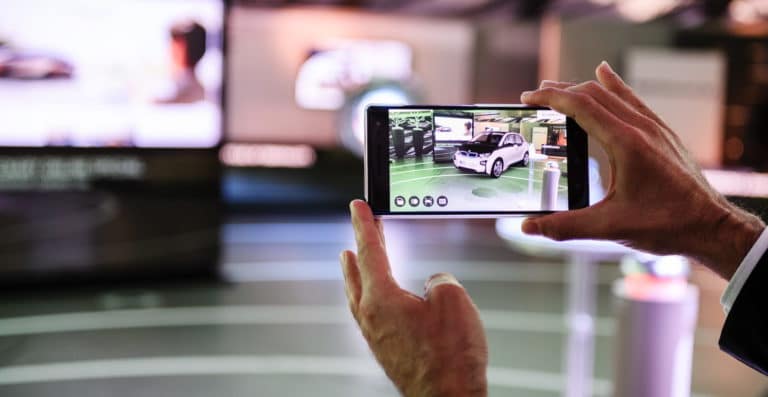
One of AR’s leading early use cases is dimensional product try-ons. Beyond usage, it’s also naturally monetizable as the opportunity to demonstrate products with greater dimension resonates with consumer brands. More importantly, it’s showing real ROI.
Another positive attribute of AR’s use in product marketing is that it’s broadly applicable. Though it started with selfie fodder and things that go on your face (sunglasses, lipstick, etc.) AR continues to broaden to the larger world seen through your smartphone’s rear-facing camera.
This opportunity spans “faces & spaces” as we like to say. And the latter is where the larger market lies for AR marketing’s business case, given a broader universe of potential products. So that begs the question, what types of consumer products are most primed for AR marketing?
One factor is size. The larger the product, the more value AR can add. This is simply because a key consideration is fit: will the couch or flat-screen TV fit in my living room? It also has to do with cost. Big items generally cost more and therefore compel greater consideration cycles.
That last part is where AR can boost buyer confidence through a better sense of product dimension, look and feel. And there’s nowhere these factors are more pronounced than buying a new car. This is why auto sales are a recognized but still underutilized flavor of AR marketing.
Maintain the Illusion
The latest company to feel out this opportunity is Toyota. In partnership with Yahoo, it created an AR experience to visualize its cars in 3D. Specifically, the car model being spotlighted in its first AR campaign is the 2023 Toyota Crown, with other models to follow if it does well.
The “Says So Much” campaign lets users activate their smartphone cameras to drop a car model in their space for 360-degree virtual tours (try it here). That includes the car’s exterior, interior, and “educational hotspots” anchored at various points to activate informational sequences.
Speaking of “anchored,” the AR lens makes use of positional tracking so that users can walk around the car or sit in the driver’s seat while it remains in place. This basic AR functionality is critical to maintaining the illusion that the car is there in front of you as you move around it.
From the user’s perspective, they can activate the AR experience through QR codes distributed in all campaign destinations. Those destinations include digital out-of-home screens, online banners, and connected TV ads. All that distribution is one of the things Yahoo brings to the table.
But among all these campaign elements, the QR code activation is perhaps most notable. As AR proponents have learned, experiences must be dead simple and frictionless. AR already faces adoption headwinds, so raising additional friction is a death wish for any campaign.
Something Familiar
So how do QR codes help make AR more inviting? In short, they bolt AR to something familiar. Most mobile users these days know what to do when they see a QR code. Additionally, this campaign utilizes web AR – a modality that operates right within the mobile browser.
That last part is important, as it makes AR widely compatible. Web AR has grown a great deal in the AR world over the past few years in both capability and the realization from marketers that it prevents users from having to stop to download an app. Again, it’s all about friction.
Further boosting consumer acclimation are other macro factors. For example, AR marketing benefits from Covid-accelerated comfort with using digital tools to buy physical products. That especially goes for high-ticket items like cars, which was seen in Carvana’s Covid-era growth.
Yahoo backs this up with the claim that 80 percent of car shoppers are open to purchasing their next car online. That broader digital acclimation opens the door for additional tools to make the digital experience more dimensional and lifelike. And that’s where AR comes in.
Lastly, Yahoo is offering Toyota granular analytics. Given the highly-dimensional aspects of the experience, it can ingest engagement data like dwell time in a given part of the virtual tour. That level of analytics is far better than any manufacturer or dealer can expect on a car lot.






